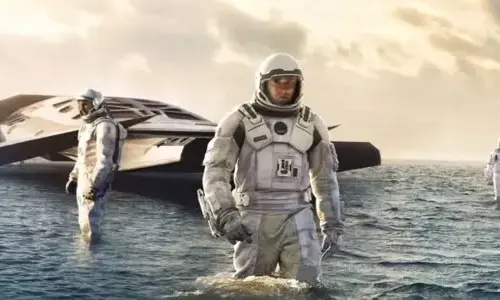History of space travel timeline
To enter the hidden space is a dream for a lot of children and adults, although some very little will be achieved.
During a lot of countries, and now private companies, worldwide have tried to create a method to get among the stars.
It is even unified countries that previously had such a powerful conflict.
Here we will undergo a timeline of important moments in space travel history, starting in the 1940s.
1942.
In 1942, V2's missile, designed by Wernher Von Braun, was the first to reach 100km (62 miles) from the Earth surface.
Also known as the boundary of space.
Braun then worked with NASA on the missile to the moon.
1947.
In 1947, the first animals entered the space.
Vinegar flies are used to study the effects of animal space travel because they are very similar to humans.
Flies went with a corn supplier to eat on flights.
1949.

Albert II is the first monkey in space.
Albert II is a Rhesus monkey and boldly goes where there is no primate was before June 14, 1949, in a US V2 missile especially adaptive, but flew 83 miles from the earth.
1957.
On October 4, 1957, Russia launched the first space satellite (or sputnik in Russian) named Sputnik 1.
Sputnik 1 is the first satellite on orbit around the earth.
In November of the same year, Laika, the Russian dog became the first animal around the earth.
She traveled in Sputnik 2 and helped understand whether people could survive in space.
1959.
By 1959, both US and Russian scientists were in a race to get a craftsman on the moon;
Space-Inve Luna 2 Crash landed on the moon with a fatal rate.
Ten years later, the first man visited the surface.
1961.

On April 12, 1961, Russia's Cosmonaut Yuri Gagarin became the first man in space.
Traveling in Vostok 1, he completed an earth's orbit, landing for about two hours after debuting.
Gagarin had to push out and use it to land when manually designed to collapse land.
1962.
John Glenn became the first American man around the earth on the airport of friendship 7.
John really chose this name;
1963.

Valentina Tereshkova, a Russian Cosmonaut, becomes the first woman in space.
After her mission, she had a crater in the far side of the moon named after her name.
1965.
Who can believe, after only sending men to the moon, NASA has managed to successfully implement the first Mariner with their Mariner 4 Craft.
1966.
In 1963, John F. Kennedy promised that in 1970, the United States will take men to the moon.
NASA first sent a robot spacecraft called a survey 1, to ensure they could safely land.
It came to the moon on May 30, 1966, right after the Russian Luna 9 exploration.
Once a survey of a landing, take a picture and send it back to them to wait for scientists to use them to visualize the terrain and find a plan to land people on the moon safely
1969.

On July 20, 1969, "a famous small step" was taken by Neil Armstrong and Buzz Aldrin, and the first words were said, "Eagle landed".
This symbol phrase confirmed them as the first men on the moon.
Apollo 11 family flies 250,000 miles to the moon and returned.
1970.
Apollo 13 on April 13, 1970, the second day of the trip to the Moon, faulty a straps system caused an explosion.
Using what is on the ship, NASA and the astronauts on the ship have been repaired to bring the crafts damaged back to the earth.
1971.
This witnessed the first time using Lunar Rover, a car with a maximum speed of 8 miles per hour (13 KPH), to explore the Moon on the Fifth, Thursday and Friday Apollo missions.
Rover has increased by 17 months to design and develop.
The first universe station was launched in 1971, Salyut 1 of Russia, and was released from a unmanned missile.
1973.
In 1973, Mars 2, a 2-part exploration of Russia discovered Mars.
Partly in orbit in the whole year sends images back to Earth and the other is landing and exploring the surface of Mars.
It was destroyed when an unmissible though.
1977.
The United States has launched their voyager deep space exploration.
Voyager 1, on February 17, 1998, became the farthest humanitarian object in space after it passed the previous title owner;
1981.
From April 12, 1981, the idea of reusable space crafts, before they were a great person.
Space shuttle vehicles are designed to reduce costs and can be used up to 100 times.
With five rocket engines, it reaches 17,000 miles per hour (27,350+ KPH).
The first handmade started the time of the shuttle called Columbia.
1986.

On January 28, 1986, Space Shuttle Challenger exploded due to the fuel system error right after launching.
All seven astronauts were killed.
After this tragedy, all shutations were bases for nearly three years.
In the same year, the construction began on Mir Space Station, a long-term space station with a consistent living place.
It is built in the sections, takes 10 years, with each release missile bit and combined in orbit.
In 2001, it was destroyed on its platform to Earth.
The last large Module of ISS did not arrive in 2010.
1990.
The discovery of the shuttle was launched to deploy Hubble space telescope into the earth's orbit.
The telescope can lock a goal without moving to the width of a human hair overlooking a mile away, or scientifically more scientifically, more than 7/1000 Arcsecond.
Like having 60 minutes in an hour, there are 60 arminutes at 1 degree and 60 ArcSeconds in ArcMinute.
1991.

In 1989, Helen Sharman won a competition to become his first astronaut in space, she had previously worked for Mars Bar.
After 18 months of harsh training, she participated in a Russian mission to Mir Space Station.
1995.
After all their problems, the United States and Russia finally started working together, or at least in terms of their space.
This year witnessed the United States's shuttle pier at the Mir Space Station of Russia.
1997.
Mars's first look occurs when Sojourner, a Rover U.s, go to Mars to explore the geology of the planet.
2000.
In 2000, the first fixed crew had the International Space Station (ISS) and was there since then.
2001.
On April 28, 2001, the US millionaire Dennis Tito spent about $ 20,000,000 and had 900 hours of training to become the first spaceship tourist for a trip in a Soyuz Russian spacecraft
He spent a week on orbit and this time, he spent many visitors visiting ISS.
This symbolizes hope for space travel, so that it becomes a normal one-day joint venture for everyone.
2004.
On June 21, 2004, the first private sponsoring space flight occurred with manual spacecraft.
The adaptation of this technology is being used by Virgin Galactic, a company that provides private travel flights into space.
Although in 2014, it was collapsed during the testing process, flights are still taking place.
This year, the European Space Agency launched their Rosetta exploration in the hope of reaching Comet 67p / Churyumov-Gerasimenko.
2008

SPACEX, a private company has built a craft to repire new retired shuttle, becoming the first to launch a privately funded fuel rocket into orbit, Falcon 1.
These missiles are used to reporter their dragon capsules, a remote control capsule to get supplies for ISS.
2011.
The United States Messenger Mission Thuy, debuted in 2004, making his journey to successfully traveling 48 million miles (77 million km), to start the trajectory that lasts a year of mysterious planets.
Russia has launched the largest space telescope so far has the name Spekte-R to defeat Hubble.
The device is built to study astronomical objects with a part of Arcsecond part angle resolution.
Giant telescope weighs 11,000 pounds (5,000 kg).
2012.
A big moment for Trade Space Travel Start on May 22, Spacex launched another C2 + Dragon provided by their Falcon 9 missile to provide a subsidiary for ISS
Capsule was arrested by ISS robot arms and was docked for nearly six days while the astronauts removed the goods and loading that fate for the earth, a trip that did not have real complications.
Rover is curious of NASA, part of the device's size of a car, landing on Mars on August 6.
It was the largest and most advanced Rover on the red planet.
On August 25, Voyager 1, was released in the late 70s, became the first artificial spacecraft to overcome the space why.
2014.

Rosetta exploration, was released in 2004, finally reached the Comet 67P / Churyumov-Gerasimenko after a 4-billion miles journey.
While on the comet, Lander has sent high resolution data and images from the surface of the comet back to the earth consisting of 490 foot cliffs and the rocks of indoor in the house.
The Philae Lander landed slightly on November 12 after a 7-hour dangerous match.
The Harpoons were designed to attach to the unsuccessful comet and Lander was bounced twice before landing successfully.
2015.
On March 6, NASA's dawn spacecraft entered orbit around a dwarf planet, the largest object in the asteroid belt between Mars and Jupiter.
With a diameter of 590 miles (950 km), it creates a quarter of the mass of the belt.
July 14 saw Nasa's New Horizons spacecraft to Pluto after traveling 9 years and 4.6 billion miles.
It goes, in its closest approach, only 7,750 miles from the surface and capturing high resolution of Pluto and Charon, the largest moon.
Pluto is said to be about 50 miles greater than thinking.
2020.

On July 30, 2020, at 11:50 UTC NASA launched their Mars Rover, this was the largest foundation of four missions to Mars by 2020.
There is no doubt, this task has the most successful planning plan with modern modern technology and modern technology that can really explore the Mars land never before!
Mars Rover's mission among other things is to see if the Red Planet has provided vividness outside the ground by exploring any signs of possible in the past and present.
Space travel for many people enchanting them from a very young age, including myself, and because this list has shown, there is always something new to discover!
We hardly scratch the surface, and every year we learn or start something new with the dream of gaining a little unknown of the universe.
To go to the farthest edge man can achieve will always be the goal.
To excavate hidden secrets, to find life or anything interesting and bewildered to promote some of the best minds in the world every day.
 52ºc, New York
52ºc, New York







